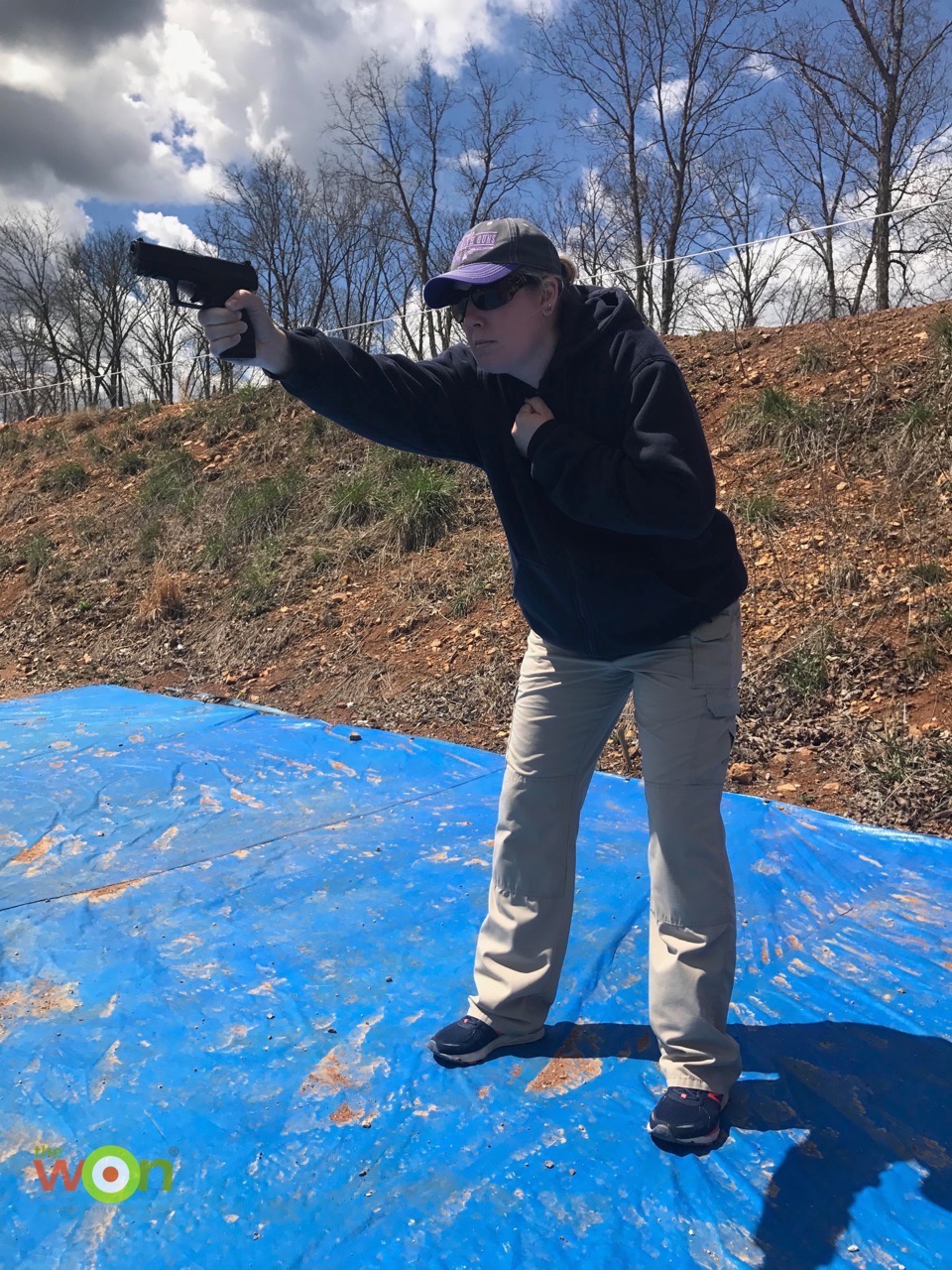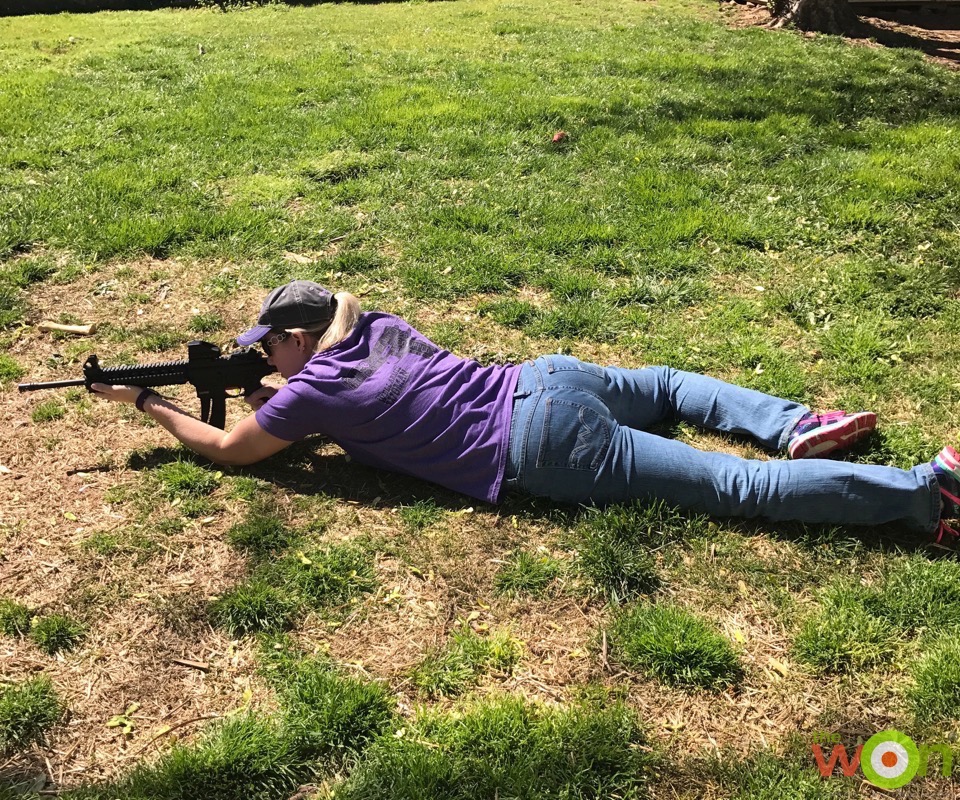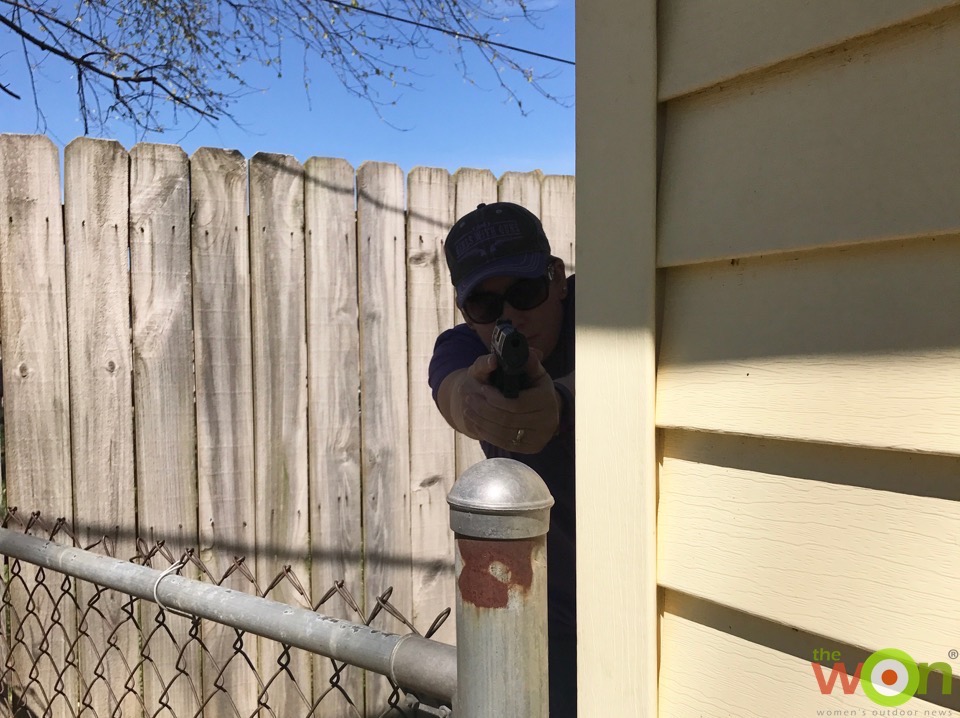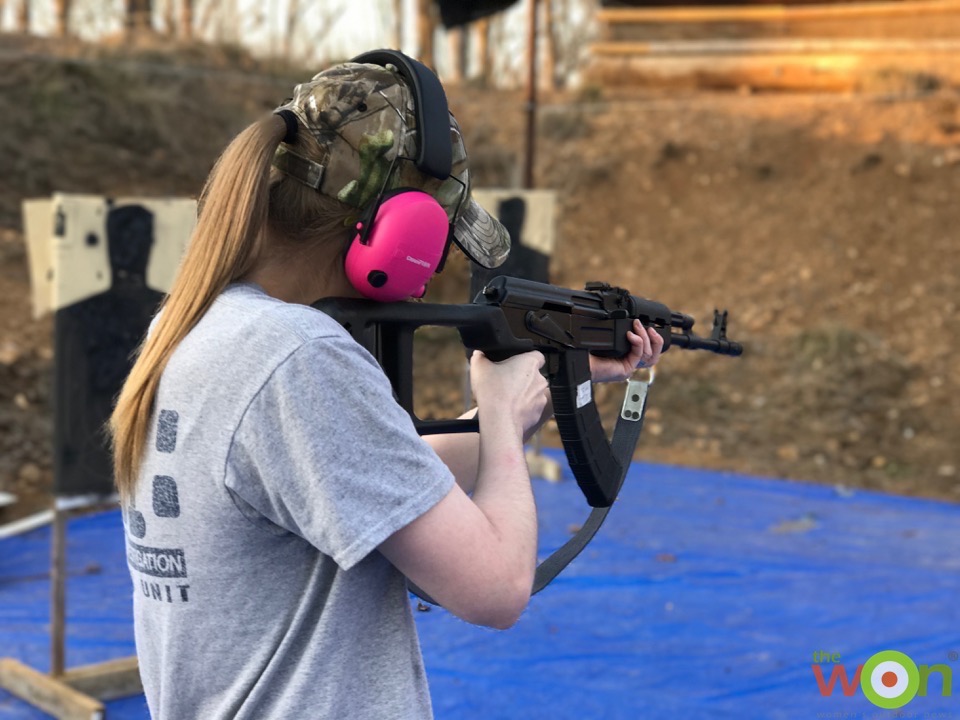Since I became a firearms instructor, I’ve had the opportunity to train under a variety of instructors who’ve had different backgrounds and experience. I’ve also learned how to teach several types of firearms classes, beyond the NRA Basic Pistol and Rifle classes. There’s nothing wrong with the basic courses; they’re a solid foundation for anyone new to shooting. However, once you’ve mastered the basics of safety and marksmanship, you should consider learning other ways to shoot besides the traditional weaver stance. Real-life situations might require you to shoot from different positions, so let’s look at a few.
Consider the possibility that during a life-threatening encounter you might not have both hands to work with. Whether you’re trying to block an attacker throwing punches at you, you’re holding your child in one arm and drawing your gun with the other, you’re trying to open or close a door, or you’ve been injured and only have one usable hand, training for this scenario is important. It’s also essential to train one -handed using your off hand. This takes practice, but is not difficult—and it maximizes your chances of survival should a situation arise.

Stacy demonstrates the one-handed stance.
The main difference between shooting with two hands and only one is, well, one hand! The fundamentals remain the same. The easiest way is to start with your arm straight out, elbow locked and the gun vertical to the ground. (An alternative is to lock your arm straight out with the gun slightly angled, closer to the natural angle as if you were pointing at an object.) It’s a good idea to keep your non-shooting hand across your chest. This serves a couple purposes. The first reason is to keep it out of the way and not in front of the muzzle of the gun. The other is that in a firefight, your arm can protect the vital organs in your chest, should a bullet hit you. Squeezing the trigger with your strong hand should feel the same as normal. It will feel different using your weak hand, and sometimes a little harder, depending on your hand strength. Again, with time and practice, it’s a skill that’s easy to learn.
The prone position is most often used in hunting, not personal defense, and is used with a rifle, not a pistol. Hunter education classes promote shooting prone, saying it’s the steadiest shooting position. They also feel that the fundamentals of rifle shooting—aiming, breath control, trigger squeeze and follow-through—are best learned in the prone position.

Shooting from the prone position helps with accuracy and stability.
To assume the prone position, lower yourself to the ground like you’re doing a push-up— behind your rifle and slightly to the left (if you’re a right-hand shooter) with your legs behind you, feet pointed out. Some prefer to be directly behind the gun, with one leg slightly bent. This will vary depending on what’s comfortable for you, or who’s instructing. Regardless, your body should be in contact with as much of the ground as possible. Now bring the butt of the rifle firmly to your shoulder pocket. Your upper body and arms will support the weight of the gun, unless you’re using a sling or are resting the handguard on a backpack or other object. Rest your cheek on the stock; you should clearly view your target past your sights or through the scope. Finally, assume the firing grip with your shooting hand, so that you’re able to squeeze the trigger without moving the point of aim.
We can never know for sure what kind of situation we’ll find ourselves in, so we need to be prepared. A well-rounded shooter will practice for various scenarios and be ready to use every means necessary to survive. Wouldn’t you choose to seek cover in a gunfight if it were available? Having some familiarity with how to use a barricade is essential.

Using a wall as cover or concealment allows for the element of surprise.
Do you know the difference between cover and concealment? Cover is anything that will stop a bullet from reaching you (for instance, a concrete wall). Concealment is something that can be used to hide your presence (for example, a bush). Cover can also be concealment, but not vice versa. It’s a big advantage to be able to find cover, or at the very least concealment, to hide behind during a gunfight.
One of the most important things to be aware of when using a barricade is to keep at least an arm’s length away from it. Not only will this help prevent you from being disarmed as easily if an assailant is on the other side of the barricade, but it gives you a wider angle of view downrange. (Hopefully you were paying attention in your high school geometry class and understand that concept.) By backing away from the barricade, I give myself the best angle to see my target before I’m seen—which also gives me the best chance of survival.

As I mentioned up front, practicing for real-life situations is important. In addition to stationary target shooting, throw in some drills that require you to move, think and react. Identify your weaknesses and the skills you need to improve so you’ll be more confident and ready in the real world.
Freelance writer Stacy Bright holds instructor certifications from the NRA in Pistol & Rifle, as well as being an Range Safety Officer and Refuse to be a Victim instructor. In addition to her NRA credentials, she also is a Missouri CCW instructor and teaches various other home and personal defense courses. “In a field dominated by men, I feel I bring a unique perspective to firearms and training, especially to women. I'm passionate about educating, empowering and developing confidence in those I train. In November of 2014, I started the Southwest Missouri chapter of The Well Armed Woman,” said Stacy. Stacy lives in southwest Missouri, and has been married for 20 years. Visit TWAW Facebook page: The Well Armed Woman-Springfield, MO Chapter. View all posts by Stacy Bright